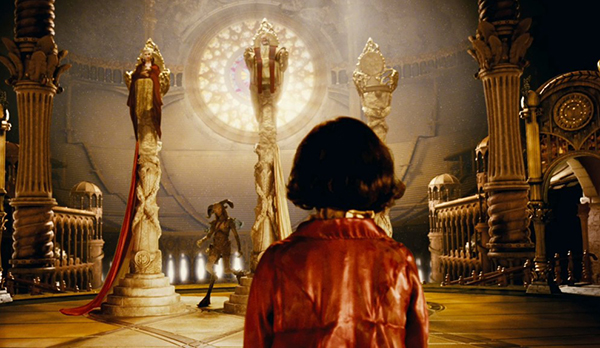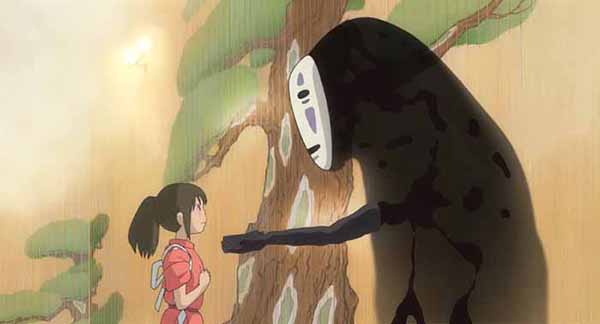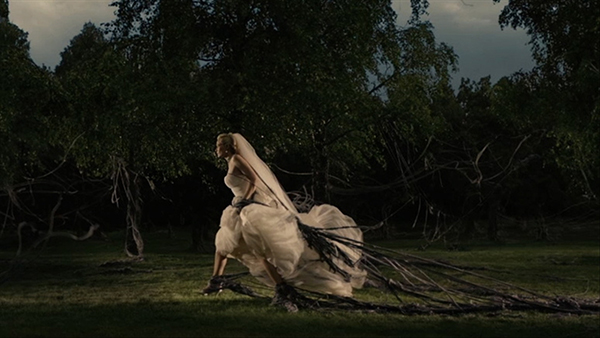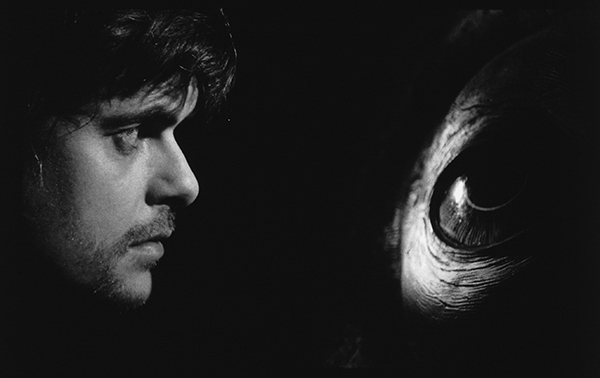10 Directors Who Should Probably Helm The Sandman Movie Instead of Joseph Gordon-Levitt
Books Lists The SandmanLet’s make one thing abundantly clear: Joseph Gordon-Levitt is an exceptional talent, and we’re ridiculously fond of him here at Paste. We’re also incredibly fond of fantasy laureate Neil Gaiman, and some of us even consider his post-modern, mythology-hopping epic The Sandman the best comic ever written. So when Gaiman and Gordon-Levitt tweeted that they would unite to work on a film translation of the 75-issue epic, we didn’t quite know what to think. Specifically, we didn’t know what to think of Gordon-Levitt either A) starring, or especially B) directing one of the most complex, storied, unfilmable storylines in modern fiction. We liked Don Jon as much of the next person, but it would take savant-grade skill to hop from a charming romantic comedy debut to a CGI tragedy about feuding anthropomorphic deities.
But then who could do The Sandman celluloid justice? What director could take something transcendental and unwieldy and compress it into something accessible without losing its complex brilliance? Honestly, we don’t know. But as we look back on this announcement and read The Sandman: Overture #2, here are some educated guesses that a mainstream studio like Warner Brothers might never consider in a million years, but would make for one hell of a movie. In alphabetical order:
1. Darren Aronofsky
Evidence: Pi, Requiem For A Dream

Darren Aronofsky loves to mess with your head. Whether he’s toying with a paranoid mathematician in Pi or sprouting feathers from Natalie Portman’s back in Black Swan, he’s a master of skewed perception, constantly forcing us to question what’s real. Though the Aronofsky touch doesn’t typically veer into the magical (more like the psychologically tortured), there are few better equipped to handle the darkness at the heart of Sandman, not to mention a certain “Cereal” convention that would be a particularly nightmarish wad of clay in Aronofsky’s hands. You can just see the grainy-filmed leerings of The Collectors as they swap stories and the shaky-cam vignettes of sadism seen through The Corinthian’s toothy eye cavities. Robert Tutton
![]()
2. David Cronenberg
Evidence: Naked Lunch

Now we’re getting into really dark territory. David Cronenberg has long stood as cinema’s dirty old savant, with films like Scanners, The Fly and Videodrome reveling in disturbing imagery and concepts to illustrate larger philosophical notions about humanity and its relation to technology. While Cronenberg took a brief detour into more straightforward dramas like A History of Violence, Eastern Promises and A Dangerous Method, last year’s Cosmopolis — though far from his best work — saw the Canadian filmmaker nudging back toward his older habits. A Cronenberg-directed Sandman film may not be entirely faithful to Neil Gaiman’s source material, especially given how the filmmaker previously envisioned consciousness-probing narratives in films like eXistenZ and Naked Lunch, but it would be an intriguing melding of two great minds that I would be first in line to see. Mark Rozeman
![]()
3. Alfonso Cuarón
Evidence: Harry Potter and the Prisoner of Azkaban

With all the sci-fi and fantasy movies flooding movie theaters the past few years, it’s easy to assume there are plenty of directors with the track record to tackle Neil Gaiman’s Sandman. This isn’t the case. Sure, there are plenty of genre giants (Gilliam and Burton leap to mind), but this same group is prone to overindulge, letting their grand visions and ornate designs overwhelm the original story. Another obvious recommendation would be a “visual specialist” like Zack Snyder or Tarsem Singh, but while Snyder can at least be faithful (or too faithful) to the original, neither of them can tell a story very well. (They can certainly present a series of vivid tableaux, though.) There is one director who would be particularly apt to bring the finely-wrought fabric of Gaiman’s work to screen: Alfonso Cuarón.
It’s easy to forget Cuarón’s filmography is replete with well-crafted films full of fable both light (1995’s A Little Princess), dark (2006’s Children of Men) and both (2004’s Harry Potter and the Prisoner of Azkaban). His work with the third Harry Potter film stands out prominently in this regard. After two uninspired paint-by-numbers adaptations of J.K. Rowling’s books, Cuarón’s Prisoner of Azkaban actually felt magical. It takes a special alchemy to bring harmony to the needs of story and studio. Cuarón has exhibited that balance with one of the biggest franchises out there. He’d still have a big task before him, but I can think of no other director I’d rather see try. (There’s always American Gods). Michael Burgin
![]()
4. Guillermo del Toro
Evidence: Pan’s Labyrinth

Who better to direct the film adaptation of The Sandman than Guillermo del Toro, the master of art nerdery that manages to please a big audience? Del Toro has no problem working with effects, having delivered a clear lyricism to battles between supernatural monsters. The Sandman is a dark book, relying heavily on different shades of gray, and del Toro knows how to wring the most out of dramatic lighting. He conveys clear storytelling that demands little patience, and his interest in mythology has been present since early in his career. Most importantly, del Toro’s films hold a timeless quality that equally embraces the cool and the relevant. Hillary Brown
![]()
5. Jean-Pierre Jeunet
Evidence: The City of Lost Children

Jean-Pierre Jeunet’s filmography is a near textbook definition of whimsical and dream-like. Yet, while the French auteur may now be most closely associated with his breakthrough 2001 comedy Amélie, Jeunet’s earlier features, including the dark comedy Delicatessen and steampunk science-fantasy drama The City of Lost Children (both co-directed with Marc Caro), display a darker vision perfectly suited for a Sandman feature film. Even his ill-fated American debut, 1997’s Alien: Resurrection, contains some of the most arresting visual imagery of the entire waning franchise. Here’s betting, if given the opportunity and the appropriate budget, Jeunet would do Neil Gaiman proud. Mark Rozeman
![]()
6. Rian Johnson
Evidence: The Brothers Bloom

As noted, Paste adores JGL, but when it comes to adapting something as beloved as the Sandman series, I would prefer that the guiding creative force be someone who has a few great films under his or her belt. So how about someone whose career is unquestionably intertwined with Gordon-Levitt’s? Namely, director Rian Johnson. Johnson has only directed three films to date, two of which star JGL (Brick, Looper) and one in which he cameos (The Brothers Bloom). More importantly, each of Johnson’s three features represents a new genre experiment, and each displays a distinctive visual style: Brick is a film noir-inspired high school murder-mystery, Brothers Bloom is a color coded, Wes Anderson-meets-David Mamet adventure romp and Looper is a sci-fi/time travel drama that melds elements of anime and French New Wave. No matter what the genre, however, Johnson always comes equipped with a compelling narrative, as well as a fantastic visual eye. I’m excited anytime he announces a new project and believe his version of Sandman would bend mainstream tastes and artful passion to new heights. Mark Rozeman
![]()
7. Ang Lee
Evidence: Life of Pi

If Ang Lee’s extensive filmography has taught us anything, it’s that the man can basically do anything, from Jane Austen rom-coms (Sense and Sensibility) to emotionally-devastating dramas (Brokeback Mountain, The Ice Storm) to contemplative martial arts films (Crouching Tiger, Hidden Dragon). Yes, his last foray into the world of comic book adaptations, 2003’s tepidly-received The Hulk, was not exactly a resounding success. But, if anything, that movie’s chief failure derived from the inclusion of Lee’s meditative approach to an action-driven property starring a big green giant prone to smashing. Such a cerebral mindset, however, would work wonders in a Sandman film. Not to mention Lee’s most recent film, the Oscar-winning Life of Pi, became a new technical benchmark in film, warping reality into dream-like visuals through finessed CGI. Plus, people said Life of Pi was an unfilmable book, so surely Lee would have no problem tackling Gaiman’s magnum opus. Mark Rozeman
![]()
8. Hayao Miyazaki
Evidence: Spirited Away

This collaboration isn’t as far-fetched as you might think; Gaiman translated Princess Mononoke’s English script for the film’s stateside theatrical release in 1999. Past this brief dalliance, though, the Venn diagram of talent underneath Miyazaki’s pen would lend itself superbly to a Sandman animated film. Fanciful, winding, mysterious and epic, a Studio Ghibli Sandman would be one of the few iterations that the whole family could enjoy while still retaining a dark fairy tale edge. Even more, Miyazaki is one of the few creators who gets away with creating wonderfully accessible films that still pack myriad layers of symbolism and esoterica. The story arc “A Game of You,” a riff on childhood escapism, would fit especially well into this dream team effort. Sean Edgar
![]()
9. Lars von Trier
Evidence: Melancholia, Antichrist

We’ll file this under “not a chance in hell,” but von Trier would make the most polarizing, brutal, scene-stealing Sandman out of any director alive today (Ingmar Bergman would qualify otherwise). At its heart, The Sandman diagrams failed relationships and fractured pride with surgical precision. Von Trier’s no stranger to these threads, as seen in Antichrist’s love/hate desperation or Melancholia’s rumination on independence and obligation. Consider the surrealist imagery (planetary disarray, talking foxes) that adds such a visceral punch to these pockets of domestic strife, and Morpheus and his lady troubles lie just a thematic hair or two away. To say the least, chaos would reign in many a forum if this coupling ever became a reality. Sean Edgar
![]()
10. Béla Tarr
Evidence: Werckmeister Harmonies

You probably haven’t seen Hungarian director Béla Tarr’s 145-minute philosophical sucker punch, Werkmeister Harmonies, and that’s a shame. It’s a fantastic example of what a true auteur can accomplish, and it hints at what’s missing from mainstream, synergy-bound mass entertainment. The tragedy features a small village warped into anarchy by a disquieting circus and the massive whale corpse it drags from town to town. Tarr and cinematographer Patrick de Ranter cast mesmerizing black and white fever dreams that, among other revelations, transform a group of drunks into a makeshift orrery and turn a hospital assault into a disturbingly gorgeous portrait of self-awareness. With a film that welds weighty political philosophy into a dark, magical kaleidoscope of emotion without using an ounce of CGI, just imagine what Tarr could do with Morpheus and his brethren. This hypothetical stripped-down, water-cooler obsession probably wouldn’t make a dime, but it would dive the deepest into the pathos and rage of its source material with awe-inspiring visuals. At least there’s a copy in the AV section of Lucien’s library. Sean Edgar